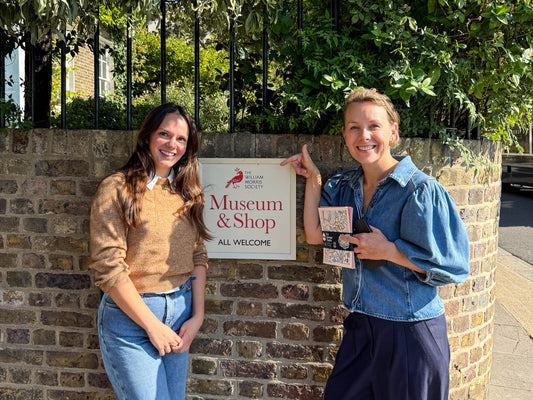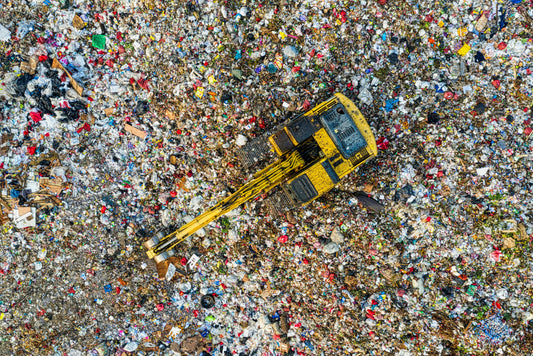
Right from the first day of launching Seep, we’ve been making sure that we more than offset our carbon emissions with On A Mission, a Swiss-based charity that selects, invests and supports sustainable reforestation projects.
After receiving a bunch of brilliant questions from our customers about what our carbon offsetting really involves and doubts about the impact this truly has, I decided to interview Fred Fournier, the co-founder of On a Mission. I asked him the most contentious questions about carbon offsetting, to gain a better understanding of how it all really works.
Welcome, Fred and thank you for allowing me to grill you about carbon offsetting. First off, please could you give us an intro into how On A Mission works?
At On A Mission we are currently working on 8 different reforestation projects, which have been carefully selected and identified as projects which are doing valuable work in the field. On a Mission is completely run by volunteers who regularly follow up with these projects and use satellite monitoring in zones in which they take place. From Nepal to Brazil, each of these projects aims to reach different goals and purposes for the communities living in surrounding areas. For instance, in Madagascar investments help revive and reforest two national parks, creating a home for endangered animals and rebuilding forests in a country where 90% of native forests have been destroyed (OAM, 2021). Today, we have planted more than 400 million trees.
There are quite a few different ways people are offsetting their carbon emissions. Please could you talk to us about why you’ve picked trees and also how you select your projects?
There are a lot of carbon offsetting certification bodies like Gold Standard and Verra that analyse and assess projects across all sorts of projects - renewable energy, biogas, cookstoves, reforestation. It is quite expensive to get certification by these bodies though and so they work particularly well for large scale projects. Reforestation has been recognised as one of the most effective solutions to capture CO2 and solve climate change and is immediately scalable. At On A Mission, we decided to only focus on sustainable reforestation and “smaller” projects because the positive impact here is much wider than just pure carbon offsetting. Projects like the ones we support in Colombia and Madagascar, address a number of different areas and create a strong link to local farmers and communities who are involved in the reforestation process and restoration of their ecosystems. Apart from increasing biodiversity, reforestation also helps improve soil, creates habitable land for animals, helps maintain the water cycle etc.
Does that mean that you can have more bang for a buck with other reforestation schemes?
Yes, if you’re only interested in carbon offsetting, there will be reforestation projects with more cost-effective carbon offsetting where vast areas of land are replanted with a small number of tree variants but we think that looking at projects more holistically alongside improving livelihoods and biodiversity have wider long term positive impacts.
Once a company has offset its carbon, how do you know that this really gets invested in trees? Do trees automatically get planted once a company has offset their carbon?
Once we receive a payment, we then send this out to the projects, depending on who needs the funds at that moment in time. The projects then start planting trees with that money, taking timing and seasons into account. The planting usually starts anytime from six months after and the impact of it can start to be seen over the next few years after the trees are planted.
How do we know that these trees are making a difference and aren’t trees that were being planted anyway?
Although each project is supported for at least 10 years, we follow up with each of them regularly, making sure that the trees are still there and sequestering carbon. When it comes to whether these projects are really additional to what would be planted anyway, it all depends on the project. For instance, the pulp and paper industry needs to be planting trees either way no matter if they are receiving additional funds for this or not. On the other hand, as seen in the project in Madagascar, the replanting of trees in destroyed forests will not have occurred otherwise. So, each project is different and you need to understand whether the reforestation is truly incremental
On average how long does it take until these trees actually capture significant amounts of carbon?
It usually takes around 2-3 years for a tree to start sequestering carbon and the main intake usually happens during the first 15 years of growth. However, this speed depends a lot on local conditions and factors such as the climate they are in, the tree species, the forest density, the soil quality, the water intake, the follow-up. For instance, a tropical climate might allow trees to start sequestering small amounts of carbon after just 2 to 3 years of being planted. When we do our calculations, we assume each tree stores 10kg of carbon per year for an average of 10 years and we also assume that a number of trees will die over the period of the project so that we are realistic with our figures.
There has been some backlash recently towards carbon offsetting schemes and many people say that we should instead focus more on the fact that carbon shouldn’t be released in the first place. What’s your response to that?
Companies should definitely start by reducing their own emissions first. But most organisations can’t reduce these to zero so offsetting will have to be part of the mix. The problem is that the industry is stuck in a clash with transparency. On one hand, large multinationals can become part of huge certified reforestation projects from which they are extremely detached and that might even have a negative impact on biodiversity and local livelihoods. On the other hand, there are great small and mid-sized projects who can’t afford to pay for consultants to look over projects and become certified, but that is really impactful. These projects need to be more transparent to make them more accessible to those who want to offset and some sort of universal standards need to be agreed upon.






